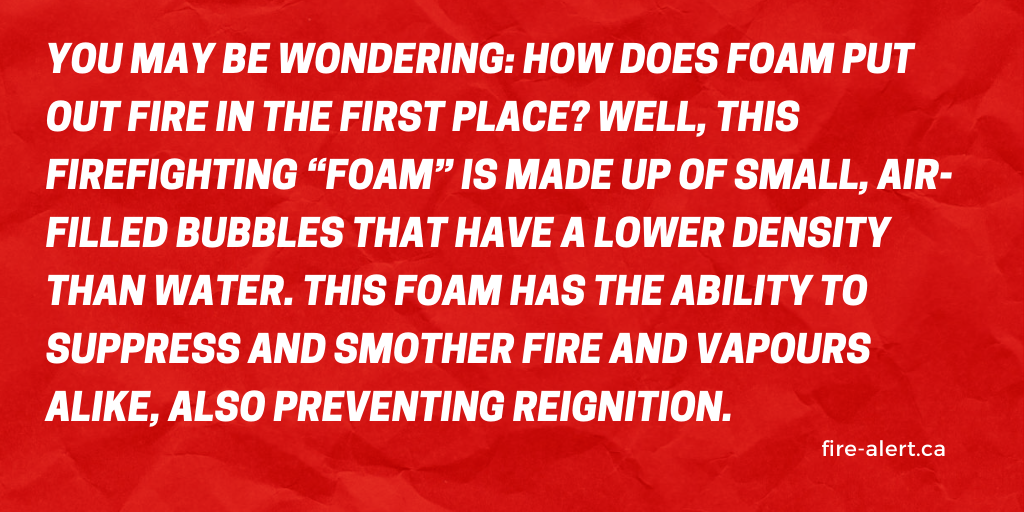How Do Foam Fire Suppression Systems Work?
Fire suppression systems come in many different forms, including the popular water mist systems. However, they all serve the same purpose, which is suppressing or extinguishing a fire. While foam fire suppression systems are similar to water sprinkler systems, they combine both water and foaming agents in order to put out large or difficult to distinguish fires. In this article, we take a look at how foam fire suppression systems work, as well as the pros and cons of implementing this type of fire safety system.
How Do Foam Fire Suppression Systems Put out Fires?

You may be wondering: how does foam put out fire in the first place? Well, this firefighting “foam” is made up of small, air-filled bubbles that have a lower density than water. This foam has the ability to suppress and smother fire and vapours alike, also preventing reignition.
Fireline tells us more on how foam fire suppression systems are able to put out fires:
“Foam fire suppression systems extinguish a fire by cooling and separating fuel from oxygen. In more technical terms, the systems are used to “cool the fire and coat the fuel that the fire consumes to prevent contact with oxygen and reduce any combustion ability.” To do this, the extinguishing agent blankets or smothers the surface of the fuel. The foam’s water content will then cool the fuel, and the area of foam that is covering the fuel will stop the combustion of flammable vapors. High expansion foams work by completely filling the volume of a building from floor to ceiling to suffocate and cool the fire.”
How Do Foam Suppression Systems Discharge?
Foam suppression systems are built very similarly to a water sprinkler system, which works by storing water that then flows through a network of pipes, and is discharged through nozzles. However, the main difference between a water sprinkler system and a foam suppression system, is the addition of the foaming agent.
FireSystems.net further explains how foam suppression systems are then able to put out large and hard to distinguish fires:
“The foaming agent is stored separately from the water and the two are mixed within the piping system prior to discharge. At the end of the piping is a nozzle. The foaming agent is added or ejected into the water at the very last moment before discharge. When the water mixes with the foaming agent, expansion occurs and creates an immense coverage of foam to fill expansive areas.”
Pros and Cons of a Foam Suppression Fire System
Of course, the biggest advantage of a foam suppression fire system is the fact that it does an excellent job at distinguishing fires, and is often much more effective than a water sprinkler system. However, there is one major con to a foam fire suppression system: it’s messy.
IntegratedFireSystems.com tells us more on why the clean up of a foam suppression system may be a deterrent for some:
“A disadvantage to a Foam Water Fire Sprinkler System is that is can be messy to clean up. In the event of a fire sprinkler system going off, you usually will have water damage. But in the event a Foam Water Fire Sprinkler System you will have chemical foam to clean up. This negative usually does not outweigh the positives when it comes to the buildings that they protect, but it is still something that should be kept in mind.”
Fire-Alert takes pride in equipping homeowners, commercial businesses and government buildings with all necessary fire safety devices to ensure the well-being of families and employees across the nation. Reach out to us using our contact form to find out more.